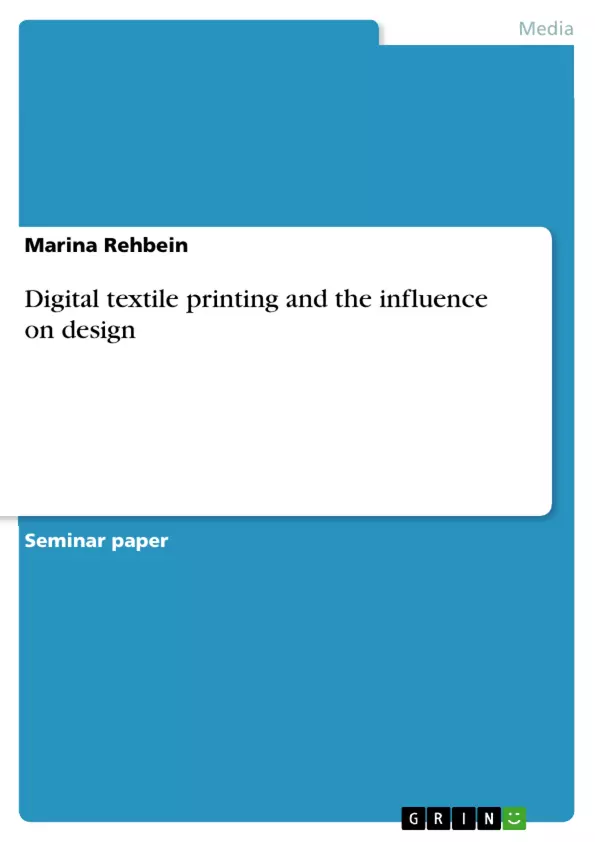Digital printing is a new dimension in textile printing. Compared to conventional methods there
are many strengths, but also weaknesses. As far as the design process is concerned, the digital
technology has an impact, to some extent being able to produce small, highly individual patterns,
at a lower price and with a lower lead time than traditionally. These facts also positively support
the trend of mass customization. Currently some designers embrace the new technology but at
the same time it is also criticised.
Key Words: digital textile printing, textile design, ink-jet printing, design influence.
Table of Contents
- Abstract
- Table of Contents
- 1 Introduction
- 1.1 Scope of research
- 1.2 Introduction
- 2 Conventional Textile Printing
- 2.1 Rollerprinting
- 2.2 Flatbed screen printing
- 2.3 Rotary Screen printing
- 3 Digital Textile Printing
- 3.1 Technology
- 3.1.1 Methods
- 3.1.2 Textile printing Inks
- 3.2 Advantages and Disadvantages of Digital Printing
- 4 Impact of Digital Printing on Design Process
- 4.1 Colours and repeats
- 4.2 Sourcing and lead times
- 4.3 Costs
- 5 Designers using digital print technology
- 5.1 Basso & Brooke
- 5.2 Aminaka Wilmont
- 5.3 Matthew Williamson
- 6 Critique on digital printing
- 7 Future Prospects
- 8 References
Objectives and Key Themes
This research paper aims to compare digital textile printing with traditional methods. It examines the most common industrial traditional textile printing methods and contrasts them with the technology of digital printing. The paper explores the impact of digital printing on the design process, focusing on aspects such as color, repeat patterns, sourcing, lead times, and costs. It also showcases designers who are currently known for utilizing digitally printed fabrics and highlights critical points arising from the design perspective.
- Comparison of digital textile printing and traditional methods
- Impact of digital printing on the design process
- Advantages and disadvantages of digital printing
- Designers working with digital printed fabrics
- Critical points from a design perspective
Chapter Summaries
The paper begins by introducing the scope of the research and providing historical context for textile printing, tracing its origins to various continents and highlighting the significance of continuous production methods like roller printing. It then delves into conventional textile printing methods, outlining roller printing, flatbed screen printing, and rotary screen printing. Following this, the paper explores digital textile printing, detailing its technology, methods, and textile printing inks, as well as discussing its advantages and disadvantages. The impact of digital printing on the design process is then examined, with a focus on color, repeat patterns, sourcing, lead times, and costs. The paper concludes by showcasing designers who are renowned for their work with digitally printed fabrics, offering a critique of digital printing from a design perspective, and exploring future prospects for the technology.
Keywords
This research paper focuses on the concepts of digital textile printing, textile design, ink-jet printing, and the impact of digital technology on the design process. It examines the advantages and disadvantages of digital printing, discusses its influence on aspects such as color, repeat patterns, sourcing, lead times, and costs, and explores the perspectives of designers working with digitally printed fabrics. The paper also touches upon the concept of mass customization and the trend of fast fashion within the textile industry.
- Arbeit zitieren
- Marina Rehbein (Autor:in), 2009, Digital textile printing and the influence on design, München, GRIN Verlag, https://www.hausarbeiten.de/document/148995


